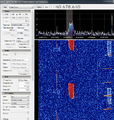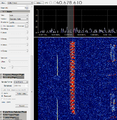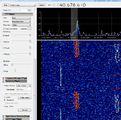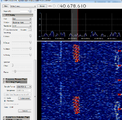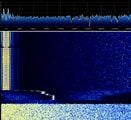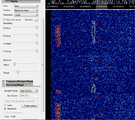Talk:Unknown 40
Here is an IQQuadrature signals form the basis of complex RF signal modulation and demodulation, both in hardware and in software, as well as in complex signal analysis. file and a audio recording of a longer burst. ( Packed with 7Zip ) Please let us know what this is !!! Such a strange Signal...
http://www.file-upload.net/download-11187014/40.677mhzsignal.7z.html
PS: this on seems to be the same Signal. http://www.sigidwiki.com/wiki/Unid_Low_VHF
(M.K.) Germany 6 January 2016
Update 21 March 2018
I couldn´t receive the signal for over a year. But in came back on a few months ago (gone again by now). And this time not just this "idle" sound. Drumroll..... It´s a baby-phone...
(M.K.) Germany
My personal belief is that this is based on something I know about but haven't had time to upload yet. Digital Coded Squelch and CTCSS Idling analog radio systems that send bursts in a periodic manner as to keep them alive on the channel. It's also what's in Unknown NFM Squelch system. I will analyse the IQQuadrature signals form the basis of complex RF signal modulation and demodulation, both in hardware and in software, as well as in complex signal analysis. you have to see if this corroborates with this. --Cartoonman (talk) 12:06, 7 January 2016 (NZDT)
Here is my analysis:
Unid Low VHFVery High Frequency (30-300 MHz)[edit]
This is a repeating trigger of some NFMNarrowband Frequency Modulation radio or repeater that has DCS. The DCS is a repeating digital signal that lies very low in the audio band and keeps other radios from triggering their squelch if its not coded for the same radio. The reason why it looks like a helix is because the person had their FFT resolution too low where the FMFrequency Modulation DCS gave a helical shape instead of it's real form. Also, the real reception mode is NFMNarrowband Frequency Modulation, not CWContinuous Wave, LSBLower Side Band Modulation, or USBUpper Side Band Modulation (Radio, referring to reception and modulation mode)Universal Serial Bus (Computer, referring to USB Ports and cables). When listening with NFMNarrowband Frequency Modulation you shouldn't hear anything since the sound should come from voice; but you can observe the DCS signal if you pipe the de-FMFrequency Modulation modulated audio into spectrum viewer and you will see the repeating DCS at ~40 HzHertz (Hz), unit of frequency, defined as one cycle per second (1 Hz)..
| Mythbuster 1 | |
|
|
Unknown 40[edit]
The signal in the IQQuadrature signals form the basis of complex RF signal modulation and demodulation, both in hardware and in software, as well as in complex signal analysis. file is a variant of unknown 40, and is essentially the same deal, only you have a single-tone repeating trigger. This is most likely an FMFrequency Modulation radio or repeater that is stock, as in, no CTCSS or DCS of any kind. Its pure FMFrequency Modulation. Again, the helical picture is due to poor FFT resolution.
| Mythbuster 2 | |
Hopefully this clears it up. As to why they repeat, you should ask over at RadioReference.com. They know more about this than me. Has to do with actual handheld radios and whatnot, and keeping channels alive.--Cartoonman (talk) 12:47, 7 January 2016 (NZDT)

